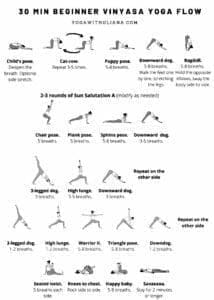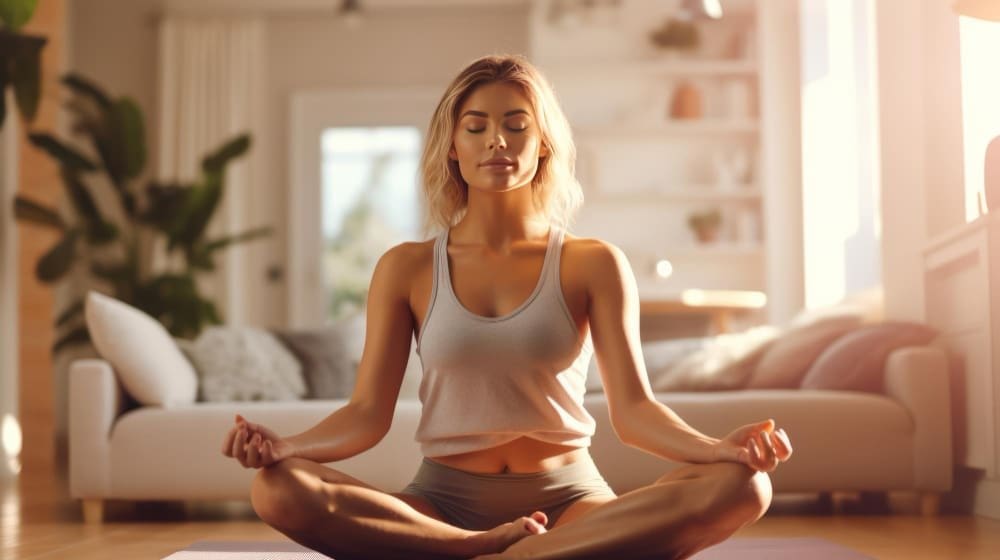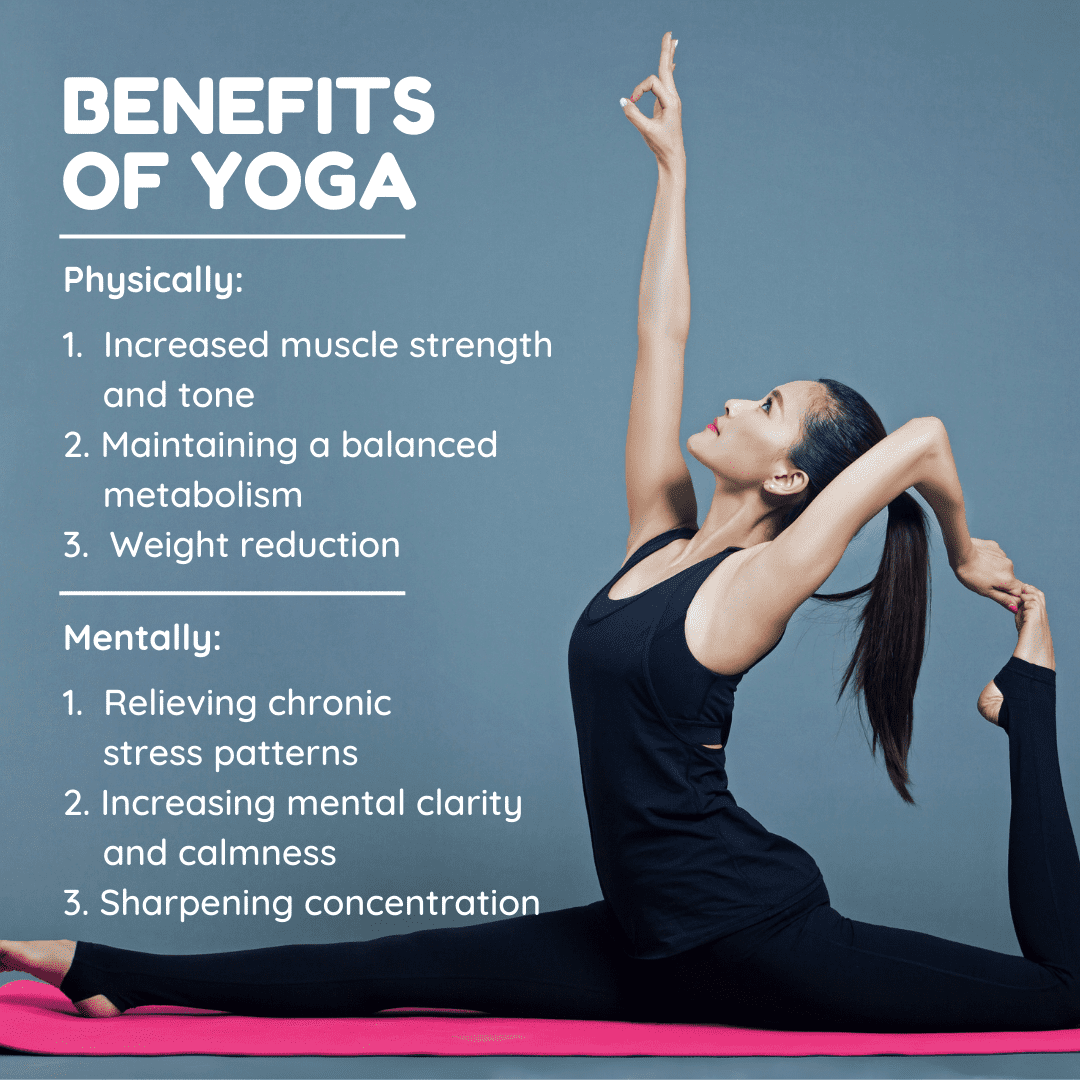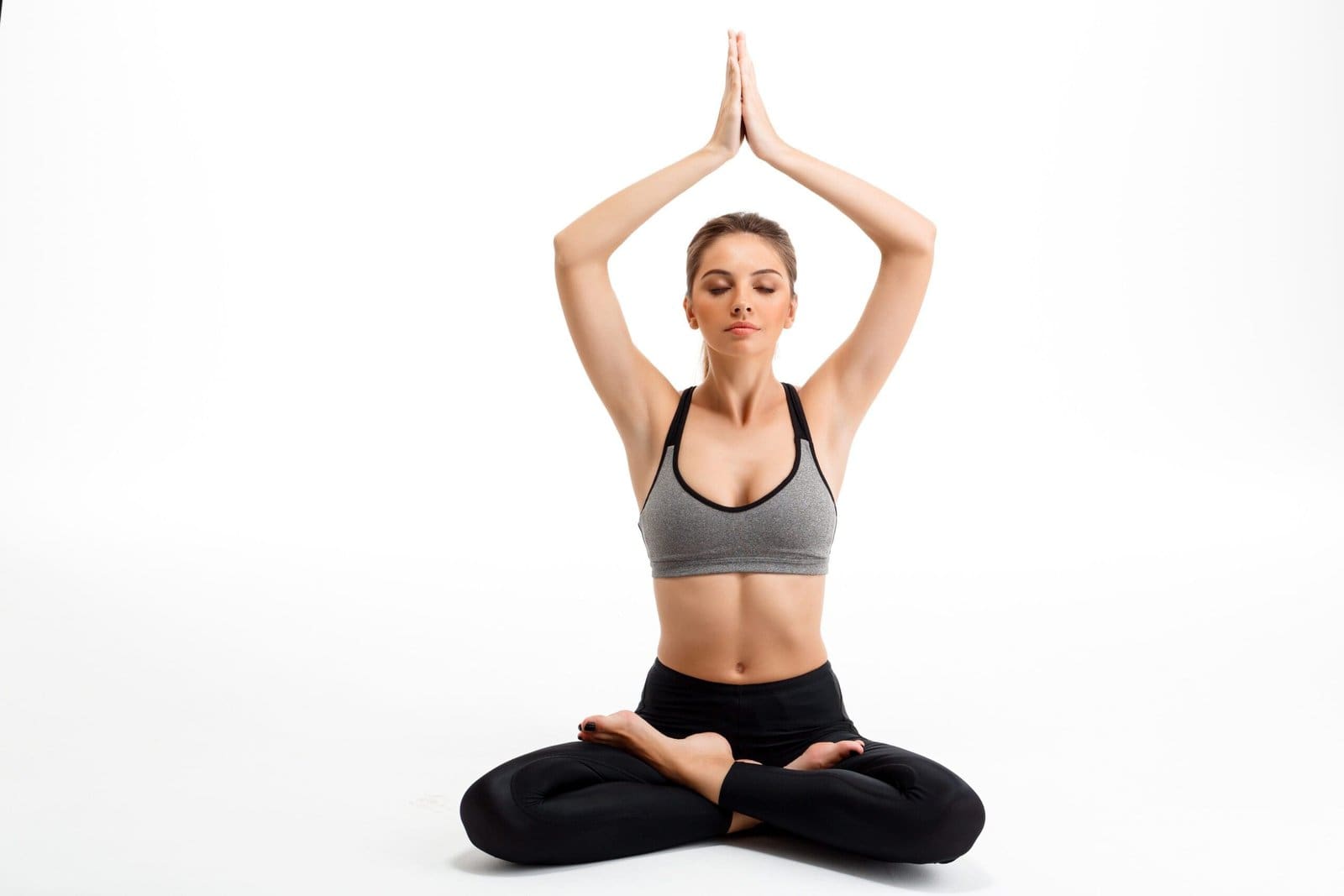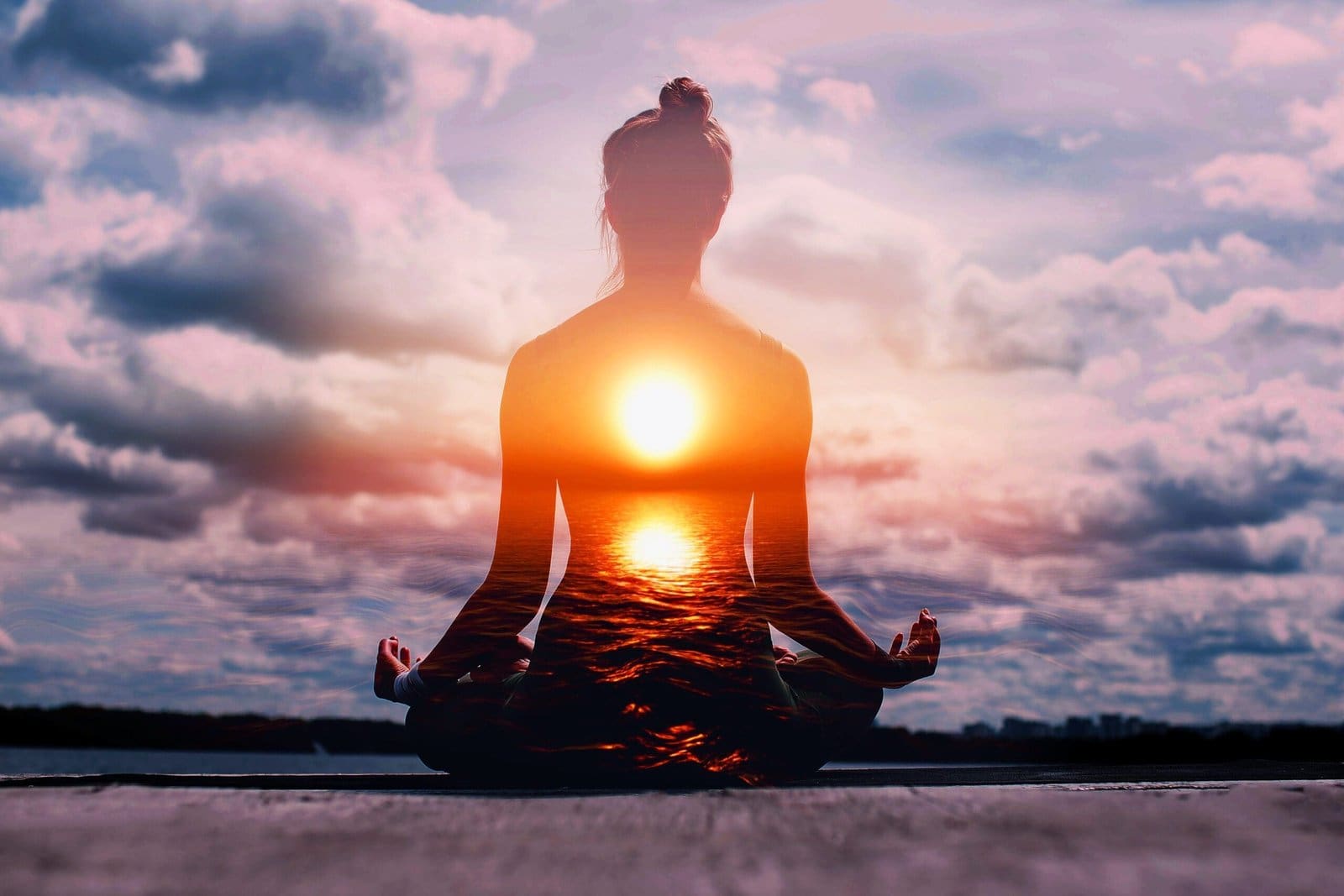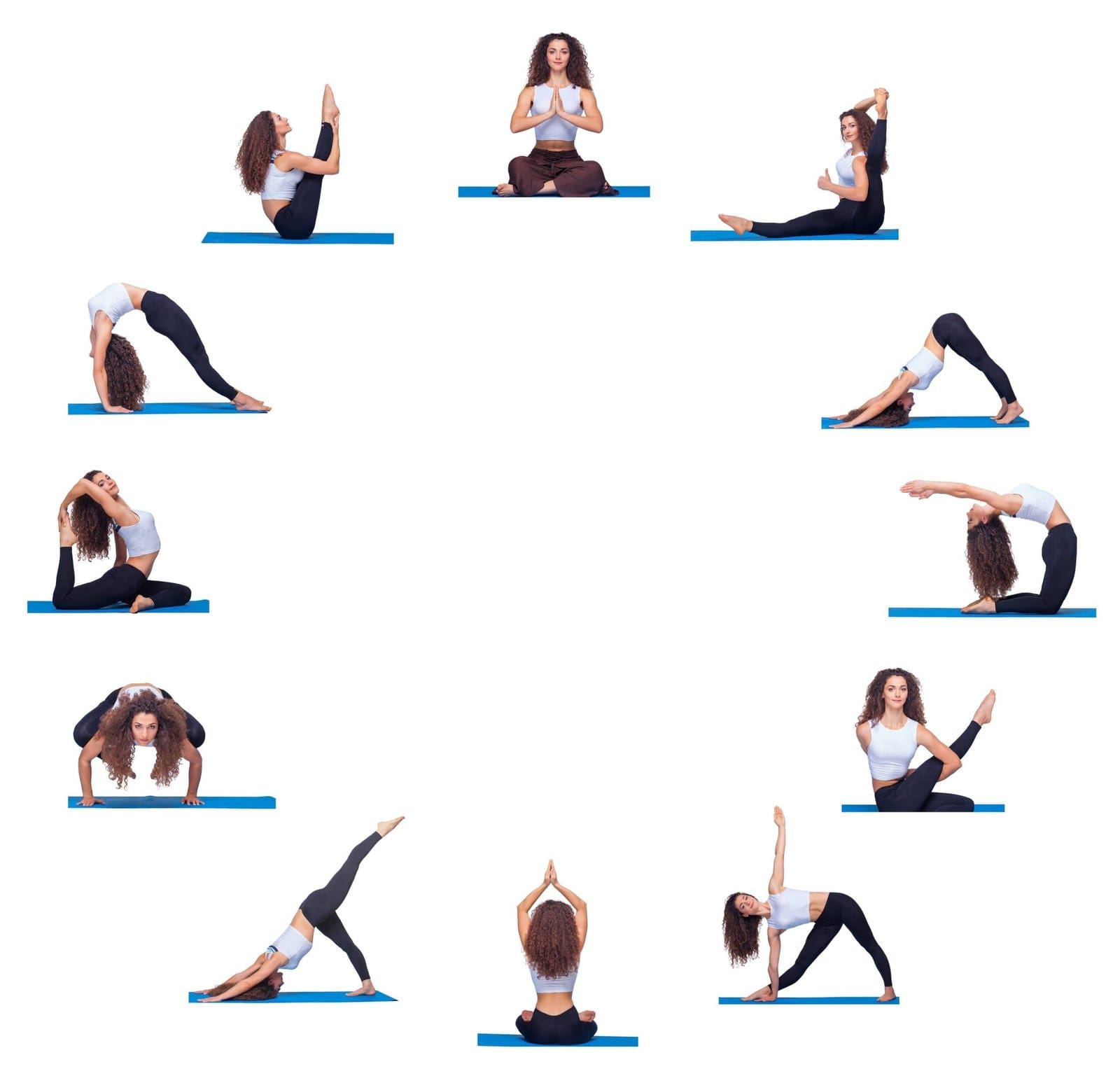Starting Your Vinyasa Yoga Journey: A Beginner’s Guide to Becoming a Yogi
Welcome to the world of Vinyasa yoga, where breath and movement unite in a graceful flow that will transform your mind, body, and spirit. Whether you’re a beginner or have some experience on the mat, this comprehensive guide will take you on a journey to discover the beauty and benefits of Vinyasa yoga. From the moment you step onto your mat, you’ll be guided through a series of flowing postures, synchronized with your breath, to create a moving meditation that builds strength, flexibility, and inner peace. With step-by-step instructions and helpful tips, this guide will empower you to develop a strong foundation, deepen your practice, and explore the endless possibilities of Vinyasa yoga. So roll out your mat, take a deep breath, and let’s embark on this transformative journey together. Get ready to flow, sweat, and find your inner yogi!
What is Vinyasa Yoga?
Vinyasa yoga is a dynamic and flowing style of yoga that synchronizes movement with breath. The word “Vinyasa” means “to place in a special way,” and in Vinyasa yoga, the postures are linked together in a seamless sequence, creating a dance-like flow. This style of yoga is often described as a moving meditation, as it requires focus, concentration, and a deep connection to the breath. Unlike other forms of yoga that hold poses for an extended period, Vinyasa yoga emphasizes the transition between poses, creating a continuous movement that builds heat in the body and increases cardiovascular endurance. The practice of Vinyasa yoga can be both physically challenging and mentally stimulating, offering a holistic approach to health and well-being.
Vinyasa yoga draws inspiration from the traditional Ashtanga yoga, but with more flexibility and creativity in sequencing. The sequences can vary from class to class, allowing for endless possibilities and a sense of exploration on the mat. Each Vinyasa class is unique, with the instructor guiding students through a series of poses, offering modifications and adjustments to accommodate different levels of experience and ability. The pace of the class can range from slow and gentle to fast and vigorous, depending on the style and level of the class. No matter the intensity, Vinyasa yoga encourages practitioners to find their own rhythm and flow, honoring their bodies and listening to their inner wisdom.
Benefits of practicing Vinyasa Yoga
The practice of Vinyasa yoga offers a wide range of physical, mental, and emotional benefits. Regular practice can help improve strength, flexibility, balance, and posture. The flowing movements and dynamic transitions in Vinyasa yoga engage the entire body, toning muscles and increasing overall fitness. As the practice builds heat in the body, it promotes detoxification through sweat, releasing toxins and purifying the system. Vinyasa yoga also improves cardiovascular health, as the continuous movement increases heart rate and improves circulation.
In addition to the physical benefits, Vinyasa yoga is known for its ability to calm the mind and reduce stress. The focus on the breath and the mindful movement in Vinyasa yoga creates a sense of presence and awareness, allowing practitioners to let go of worries and distractions. The practice becomes a moving meditation, helping to quiet the mind and cultivate a sense of inner peace. Regular practice of Vinyasa yoga can also improve sleep quality, enhance mood, and boost overall well-being.
Vinyasa Yoga for beginners
If you’re new to Vinyasa yoga, it’s important to start with a beginner-friendly class or workshop. Vinyasa yoga can be physically demanding, and it’s essential to learn proper alignment and technique to avoid injury. Look for classes labelled as “beginner” or “gentle,” as these classes typically offer a slower pace and more detailed instructions. It’s also helpful to find an instructor who is experienced in teaching beginners and can provide individualized guidance and modifications.
When starting your Vinyasa yoga journey, it’s important to listen to your body and honor your limits. Don’t push yourself too hard and always take breaks when needed. Focus on building a strong foundation and understanding the basic principles of Vinyasa yoga, such as linking breath with movement and flowing through transitions smoothly. As you gain confidence and experience, you can gradually increase the intensity and challenge of your practice.
Finding the right yoga studio or instructor
Finding the right yoga studio or instructor is crucial to your Vinyasa yoga journey. Look for a studio or instructor that resonates with you and aligns with your goals and values. Consider factors such as location, class schedule, teaching style, and the overall atmosphere of the studio. It’s also helpful to read reviews and ask for recommendations from friends or fellow yogis. Don’t be afraid to try out different studios or instructors until you find the one that feels like the right fit for you.
When choosing a Vinyasa yoga instructor, look for someone who is experienced, knowledgeable, and has a teaching style that resonates with you. Consider their qualifications, training, and any specialized certifications they may have. A good instructor should be able to offer clear and concise instructions, provide modifications and adjustments, and create a safe and supportive environment for all students. Trust your intuition and choose an instructor who inspires and motivates you on your yoga journey.
Essential equipment for Vinyasa Yoga
To start your Vinyasa yoga practice, you’ll need a few essential pieces of equipment. The most important item is a yoga mat, which provides cushioning and grip to support your practice. Look for a mat that is thick enough to provide comfort but not too thick to compromise stability. Consider factors such as material, texture, and durability when choosing a mat. It’s also helpful to invest in a mat strap or bag for easy transportation and storage.
In addition to a mat, you may also need props such as blocks, straps, and bolsters to support your practice. Props can be especially helpful for beginners or those with limited flexibility, as they provide assistance and help modify poses to suit individual needs. When purchasing props, choose high-quality ones that are durable and comfortable to use. It’s also worth investing in a yoga towel to keep you dry and prevent slipping during your practice, especially if you tend to sweat.
Proper breathing techniques in Vinyasa Yoga
Breath is an integral part of the Vinyasa yoga practice. Proper breathing techniques not only enhance the flow of energy in the body but also help calm the mind and deepen the connection to the present moment. The primary breath used in Vinyasa yoga is called Ujjayi breath, also known as “victorious breath.” Ujjayi breath is a deep, audible breath that is performed by constricting the back of the throat, creating a gentle hissing sound. This breath helps to regulate the flow of breath, generate internal heat, and focus the mind.
To practice Ujjayi breath, start by sitting in a comfortable position with your eyes closed. Take a few deep breaths in and out through your nose, allowing your breath to become slow and steady. As you inhale, slightly constrict the back of your throat and make a soft “ha” sound. As you exhale, continue to constrict the throat and make the same sound. The breath should be audible and feel slightly warming in the back of the throat. Practice Ujjayi breath throughout your Vinyasa yoga practice, synchronizing each movement with the breath.
Common Vinyasa Yoga poses for beginners
As a beginner in Vinyasa yoga, it’s important to start with foundational poses that build strength, flexibility, and body awareness. Here are some common poses that you can incorporate into your practice:
1. Mountain Pose (Tadasana): Stand tall with your feet hip-width apart, grounding through all four corners of your feet. Engage your core, roll your shoulders back and down, and extend the crown of your head towards the ceiling. Relax your arms by your sides, with your palms facing forward.
2. Downward Facing Dog (Adho Mukha Svanasana): Start on your hands and knees, with your wrists under your shoulders and your knees under your hips. Press into your palms and lift your knees off the mat, straightening your legs and lifting your hips towards the ceiling. Keep your heels slightly lifted or press them towards the mat, depending on your flexibility.
3. Warrior II (Virabhadrasana II): From a standing position, step your left foot back, keeping your feet wide apart. Turn your left foot out 90 degrees and align your left heel with the arch of your right foot. Bend your right knee, keeping it directly over your ankle, and extend your arms out to the sides. Gaze over your right fingertips and engage your core.
4. Tree Pose (Vrksasana): Stand tall with your feet hip-width apart. Shift your weight onto your left foot and lift your right foot off the ground. Place the sole of your right foot on your left inner thigh, avoiding the knee joint. Bring your hands to your heart center or extend them overhead. Find your balance and focus your gaze on a fixed point.
Remember to practice each pose on both sides of the body and hold each pose for a few breaths. Start with a few rounds of Sun Salutations to warm up the body before moving into the individual poses. As you become more comfortable with these poses, you can gradually explore more advanced variations and sequences.
Building strength and flexibility through Vinyasa Yoga
One of the key benefits of Vinyasa yoga is its ability to build strength and flexibility in the body. The flowing movements and dynamic transitions in Vinyasa yoga engage all major muscle groups, helping to tone and sculpt the body. As you flow through the sequences, you’ll notice an increase in strength and stamina, allowing you to hold poses for longer and explore more challenging variations.
In addition to strength, Vinyasa yoga also improves flexibility and mobility. The continuous movement and deep stretching in Vinyasa yoga help to lengthen and release tight muscles, improving overall flexibility and range of motion. Regular practice of Vinyasa yoga can help alleviate muscle tension, reduce the risk of injury, and improve posture and alignment.
To maximize the strength and flexibility benefits of Vinyasa yoga, it’s important to practice with proper alignment and engage the muscles mindfully. Pay attention to your body’s limitations and avoid pushing yourself too hard, as this can lead to injury. Instead, focus on gradual progress and listen to your body’s cues. Over time, you’ll notice improvements in your strength, flexibility, and overall physical well-being.
Incorporating meditation and mindfulness into your Vinyasa Yoga practice
Vinyasa yoga is not just a physical practice; it’s also an opportunity to cultivate mindfulness and deepen your connection to the present moment. By synchronizing movement with breath, Vinyasa yoga naturally becomes a moving meditation, allowing you to quiet the mind and find inner peace. However, you can also incorporate specific meditation and mindfulness techniques into your Vinyasa yoga practice to enhance the benefits.
One way to incorporate meditation into your Vinyasa yoga practice is to set an intention or focus for each session. This could be a word, phrase, or quality that you want to cultivate, such as “peace,” “strength,” or “gratitude.” As you flow through the sequences, bring your attention to your intention, allowing it to guide your movements and breath. This simple act of intention setting can help create a sense of purpose and mindfulness in your practice.
Another way to cultivate mindfulness in Vinyasa yoga is to practice pranayama, or breath control, techniques. In addition to Ujjayi breath, there are various breathing exercises that you can incorporate into your practice, such as alternate nostril breathing (Nadi Shodhana) or belly breathing (Diaphragmatic breathing). These breathing techniques not only help regulate the flow of energy but also calm the mind and relax the nervous system. Practice pranayama at the beginning or end of your Vinyasa yoga session to enhance the overall experience.
Conclusion
Congratulations on completing this comprehensive guide to starting your Vinyasa yoga journey! You’ve learned about the essence of Vinyasa yoga, its benefits, and how to get started as a beginner. You now have the knowledge to find the right yoga studio or instructor, choose the essential equipment, practice proper breathing techniques, and explore common poses. Remember to approach your Vinyasa yoga practice with an open mind, patience, and self-compassion. Allow yourself to embrace the fluidity of the practice and find joy in the journey. With regular practice and dedication, you’ll experience the transformative power of Vinyasa yoga, both on and off the mat. So keep flowing, keep breathing, and let your inner yogi shine! Namaste.
Disclaimer
The content is purely informative and educational in nature and should not be construed as medical advice. Please use the content only in consultation with an appropriate certified medical or healthcare professional

5 Reasons Vinyasa Yoga Boosts Your Mental Health
Are you looking for a way to enhance your mental well-being? Look no further than Vinyasa yoga. This invigorating practice combines breath control, flowing movements, and mindfulness to provide a multitude of benefits for your mental health. In this article, we will explore five compelling reasons why Vinyasa yoga is an effective tool to boost your mental well-being. So, get ready to embark on a journey of self-discovery and find out how Vinyasa yoga can positively impact your mind. Increased Mind-Body Connection Vinyasa yoga is a powerful practice that promotes an increased mind-body connection. It allows you to become more aware of your body’s movements, sensations, and limitations. Through mindful breathing and conscious movement, you develop a deeper understanding of how your mind and body interact. This heightened awareness leads to an increased sense of presence in the present moment. By focusing on the alignment of your body and the sensations you experience during your yoga practice, you cultivate a stronger connection between your mind and body. This connection allows you to be more in tune with yourself and better understand the signals your body is sending you. It helps you recognize areas of tension or discomfort and make adjustments to find a greater sense of ease and balance. Improved Awareness and Presence Engaging in Vinyasa yoga regularly can greatly enhance your overall awareness and presence. The practice of flowing through different yoga poses and coordinating them with your breath requires full attention and concentration. In this state of focused awareness, you become more present in the current moment, letting go of distractions and worries. As you move through each pose with intention and mindfulness, you develop a greater sense of self-awareness. You become more attuned to your physical sensations, thoughts, and emotions that arise during the practice. This increased awareness allows you to recognize patterns and habits that may be holding you back, both on and off the mat. With a heightened sense of presence, you can more easily navigate the ups and downs of life with clarity and grace. Enhanced Emotional Regulation One of the remarkable benefits of practicing Vinyasa yoga is its ability to enhance emotional regulation. The mindful movement and breathwork involved help release tension and promote emotional balance. When you engage in the practice, you create a safe space to acknowledge and process your emotions, allowing them to flow freely. During Vinyasa yoga, you may find yourself experiencing a wide range of emotions, from joy and gratitude to frustration or sadness. By accepting and acknowledging these emotions without judgment, you cultivate a greater capacity to regulate and manage them. The practice teaches you to meet challenging moments with compassion and self-acceptance, helping you develop emotional resilience and a deeper understanding of yourself. Reduced Stress and Anxiety Stress and anxiety have become prevalent in today’s fast-paced world, impacting both physical and mental well-being. Vinyasa yoga offers a powerful antidote to these common challenges, providing a much-needed respite from the pressures of daily life. Through the practice, you can experience profound relaxation and relief from stress and anxiety. The combination of deep diaphragmatic breathing, flowing movements, and mindfulness helps activate the body’s relaxation response. This response triggers the release of endorphins, our body’s natural feel-good chemicals, which promote a sense of calm and well-being. As you surrender into the present moment and let go of worries, the practice elicits a deep relaxation response, reducing the intensity of the fight-or-flight response often associated with stress and anxiety. Physical Activity and Endorphin Release Vinyasa yoga is not just a practice of the mind, but also a physically demanding exercise that has numerous benefits for your body. This dynamic style of yoga involves linking breath with movement, creating a flowing sequence of poses that build strength, stability, and flexibility. By engaging in regular physical activity through Vinyasa yoga, you can experience a variety of positive changes in your body and mind. Improved Mood and Energy Levels Physical activity, such as Vinyasa yoga, has been shown to improve mood and increase energy levels. The combination of movement, deep breathing, and mindfulness during the practice can lead to the release of endorphins, which are natural chemicals in the body responsible for boosting mood and energy. As you flow through the poses, you may find that any negative emotions or stressors you were carrying begin to dissipate. The physical exertion and the rhythmic breathing help release tension and promote a sense of vitality and well-being. The practice leaves you feeling invigorated and uplifted, ready to take on whatever challenges lie ahead. Reduced Symptoms of Depression Depression is a common mental health condition that affects millions of people around the world. Vinyasa yoga has been shown to be a powerful complement to traditional treatment approaches for depression. The practice can help alleviate symptoms of depression by increasing levels of serotonin, a neurotransmitter that plays a crucial role in regulating mood. Regular practice of Vinyasa yoga can provide a sense of structure and routine, which is beneficial for individuals struggling with depression. The flowing sequences of poses, combined with intentional breathwork, can provide a sense of purpose and accomplishment. Additionally, the practice promotes self-compassion and acceptance, allowing individuals to develop a positive relationship with themselves and their bodies. Enhanced Self-esteem Engaging in a regular Vinyasa yoga practice can have a profound impact on your self-esteem. As you progress in your practice, mastering more challenging poses, you develop a sense of accomplishment and self-confidence. Each time you step onto your mat, you have an opportunity to witness your growth and celebrate your achievements. Furthermore, Vinyasa yoga encourages a non-competitive mindset and promotes self-acceptance. It teaches you that yoga is not about how your poses look compared to others but about how they feel in your body. As you learn to honor and respect your body’s abilities and limitations, you cultivate a sense of self-worth and acceptance that transcends the physical practice. Promotion of Relaxation and Mindfulness In today’s fast-paced and stress-filled world, it is essential

Starting Your Vinyasa Yoga Journey: A Beginner’s Guide to Becoming a Yogi
Starting Your Vinyasa Yoga Journey: A Beginner’s Guide to Becoming a Yogi Welcome to the world of Vinyasa yoga, where breath and movement unite in a graceful flow that will transform your mind, body, and spirit. Whether you’re a beginner or have some experience on the mat, this comprehensive guide will take you on a journey to discover the beauty and benefits of Vinyasa yoga. From the moment you step onto your mat, you’ll be guided through a series of flowing postures, synchronized with your breath, to create a moving meditation that builds strength, flexibility, and inner peace. With step-by-step instructions and helpful tips, this guide will empower you to develop a strong foundation, deepen your practice, and explore the endless possibilities of Vinyasa yoga. So roll out your mat, take a deep breath, and let’s embark on this transformative journey together. Get ready to flow, sweat, and find your inner yogi! What is Vinyasa Yoga? Vinyasa yoga is a dynamic and flowing style of yoga that synchronizes movement with breath. The word “Vinyasa” means “to place in a special way,” and in Vinyasa yoga, the postures are linked together in a seamless sequence, creating a dance-like flow. This style of yoga is often described as a moving meditation, as it requires focus, concentration, and a deep connection to the breath. Unlike other forms of yoga that hold poses for an extended period, Vinyasa yoga emphasizes the transition between poses, creating a continuous movement that builds heat in the body and increases cardiovascular endurance. The practice of Vinyasa yoga can be both physically challenging and mentally stimulating, offering a holistic approach to health and well-being. Vinyasa yoga Vinyasa yoga draws inspiration from the traditional Ashtanga yoga, but with more flexibility and creativity in sequencing. The sequences can vary from class to class, allowing for endless possibilities and a sense of exploration on the mat. Each Vinyasa class is unique, with the instructor guiding students through a series of poses, offering modifications and adjustments to accommodate different levels of experience and ability. The pace of the class can range from slow and gentle to fast and vigorous, depending on the style and level of the class. No matter the intensity, Vinyasa yoga encourages practitioners to find their own rhythm and flow, honoring their bodies and listening to their inner wisdom. Benefits of practicing Vinyasa Yoga The practice of Vinyasa yoga offers a wide range of physical, mental, and emotional benefits. Regular practice can help improve strength, flexibility, balance, and posture. The flowing movements and dynamic transitions in Vinyasa yoga engage the entire body, toning muscles and increasing overall fitness. As the practice builds heat in the body, it promotes detoxification through sweat, releasing toxins and purifying the system. Vinyasa yoga also improves cardiovascular health, as the continuous movement increases heart rate and improves circulation. In addition to the physical benefits, Vinyasa yoga is known for its ability to calm the mind and reduce stress. The focus on the breath and the mindful movement in Vinyasa yoga creates a sense of presence and awareness, allowing practitioners to let go of worries and distractions. The practice becomes a moving meditation, helping to quiet the mind and cultivate a sense of inner peace. Regular practice of Vinyasa yoga can also improve sleep quality, enhance mood, and boost overall well-being. Vinyasa Yoga for beginners If you’re new to Vinyasa yoga, it’s important to start with a beginner-friendly class or workshop. Vinyasa yoga can be physically demanding, and it’s essential to learn proper alignment and technique to avoid injury. Look for classes labelled as “beginner” or “gentle,” as these classes typically offer a slower pace and more detailed instructions. It’s also helpful to find an instructor who is experienced in teaching beginners and can provide individualized guidance and modifications. When starting your Vinyasa yoga journey, it’s important to listen to your body and honor your limits. Don’t push yourself too hard and always take breaks when needed. Focus on building a strong foundation and understanding the basic principles of Vinyasa yoga, such as linking breath with movement and flowing through transitions smoothly. As you gain confidence and experience, you can gradually increase the intensity and challenge of your practice. Finding the right yoga studio or instructor Finding the right yoga studio or instructor is crucial to your Vinyasa yogaVinyasa yoga journey. Look for a studio or instructor that resonates with you and aligns with your goals and values. Consider factors such as location, class schedule, teaching style, and the overall atmosphere of the studio. It’s also helpful to read reviews and ask for recommendations from friends or fellow yogis. Don’t be afraid to try out different studios or instructors until you find the one that feels like the right fit for you. When choosing a Vinyasa yoga instructor, look for someone who is experienced, knowledgeable, and has a teaching style that resonates with you. Consider their qualifications, training, and any specialized certifications they may have. A good instructor should be able to offer clear and concise instructions, provide modifications and adjustments, and create a safe and supportive environment for all students. Trust your intuition and choose an instructor who inspires and motivates you on your yoga journey. Essential equipment for Vinyasa Yoga To start your Vinyasa yoga practice, you’ll need a few essential pieces of equipment. The most important item is a yoga mat, which provides cushioning and grip to support your practice. Look for a mat that is thick enough to provide comfort but not too thick to compromise stability. Consider factors such as material, texture, and durability when choosing a mat. It’s also helpful to invest in a mat strap or bag for easy transportation and storage. In addition to a mat, you may also need props such as blocks, straps, and bolsters to support your practice. Props can be especially helpful for beginners or those with limited flexibility, as they provide assistance and help modify poses to suit individual needs. When purchasing
